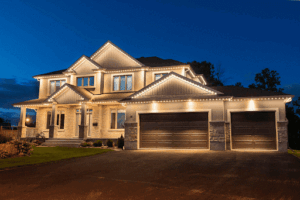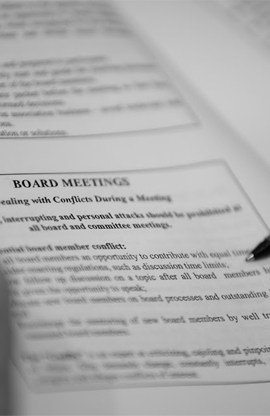Permanent lighting—also known as “permanent holiday lighting” or “trim lighting”—is quickly becoming one of the hottest home improvement trends of 2025. These systems use low-profile LED light strips installed along rooflines or eaves that can be controlled via mobile app to change colors or brightness year-round.
Homeowners love the flexibility and curb appeal of permanent lighting. The technology allows residents to display subtle white lighting throughout the year and switch to holiday colors with a tap of a button. However, as this trend spreads, it’s raising new questions for HOAs and condominium associations about architectural approval, uniformity, and community standards.
What Is Permanent Lighting and How Is It Different from Holiday Lights?
Permanent lighting systems are installed as part of a home’s exterior structure and designed to remain year-round. They are much less obtrusive than traditional holiday lights, often integrated under the eaves or soffits.
By contrast, seasonal Christmas or holiday lights are temporary decorations, meant to be hung during specific times of the year and removed afterwards. Most CC&Rs address only these temporary displays—often allowing them during the holiday season for a limited duration. Permanent lighting, however, changes the look of a home’s exterior in a lasting way and should therefore be treated as an exterior modification.
Architectural Approval Is Required
Permanent lighting almost always requires prior Architectural Review Committee (ARC) approval. Because it affects the exterior appearance of a unit or lot, these systems typically fall under an association’s architectural control provisions in the CC&Rs. If a homeowner installs permanent lighting without approval, the board may have the right—under its governing documents—to require removal.
Boards should also review whether such systems meet community lighting guidelines. There are some association documents that restrict the luminosity, color temperature, or placement of exterior lighting for aesthetic or safety reasons.
If Your Association Does Not Want Permanent Lighting
If your board is not comfortable allowing permanent lighting, do not rely solely on holiday decoration provisions in the CC&Rs. Those provisions generally regulate only temporary décor. Instead, the board should work with the association’s legal counsel to determine whether broader architectural control language covers permanently installed lighting or whether an amendment or rule change is needed.
Rules can be crafted to strike a balance between modernity and uniformity. For example, boards may:
- Require ARC approval for all roofline or soffit lighting.
- Restrict visible lighting to static, soft-white tones when used outside the holiday season.
- Prohibit animated or color-changing displays except during approved holiday periods.
- Require lighting to be professionally installed.
A Hot-Button Issue for HOAs
Across Arizona and the U.S., some community associations are welcoming permanent lighting as a community-friendly upgrade—energy efficient, low maintenance, and discreet. Others have chosen to restrict the systems, citing concerns about changing neighborhood aesthetics, distraction, or inconsistency with architectural intent.
In either case, boards should expect more homeowner inquiries about permanent lighting this holiday season – and, into 2026. Acting now to clarify or adopt policies can help prevent disputes and maintain harmony in the community.
Mulcahy Law Firm, P.C.’s Takeaway
If your board is seeing questions about permanent lighting, now is the time to review your documents. Check whether current CC&Rs or design guidelines give the board authority to regulate permanent lighting installations. If not, our firm can help draft a rule or amendment tailored to your community’s goals and appearance standards.
Permanent lighting may be here to stay—but your association can determine how bright it shines!


